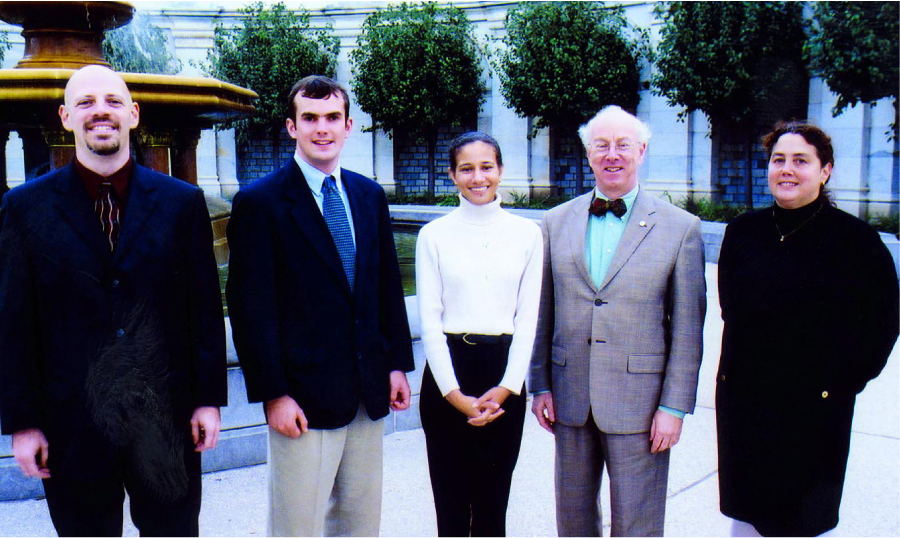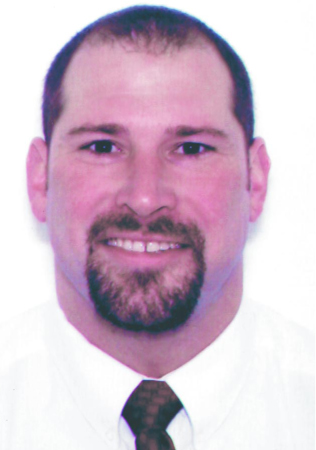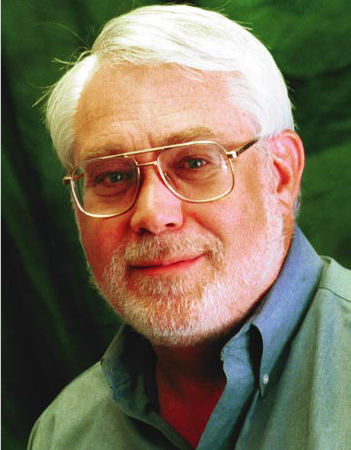Scientists Put Their Minds to Policy and Diplomacy
DOI: 10.1063/1.1537902
Being lauded on the House floor by Representative Edward Markey stands out as the high point of Kristen Kulinowski’s term as a congressional fellow in the Massachusetts Democrat’s office. Markey praised her work on legislation that requires the federal government to make potassium iodide available to communities near nuclear power reactors. In the event of a nuclear emergency, people would swallow the iodide to protect their thyroids. “It’s very unusual to actually see legislation you’ve helped draft be passed and signed by the president during the one-year term of the fellowship,” says Kulinowski. “We think that September 11th had a lot to do with being able to move this forward. The idea of a plane crashing into a reactor became a greater reality in the public mind.”
More than 30 professional societies sponsor scientists and engineers to take their skills to Capitol Hill each year through a program run by the American Association for the Advancement of Science. Physical scientists are sponsored by the American Institute of Physics and three of its member societies: the American Physical Society (APS), the American Geophysical Union (AGU), and the Optical Society of America. OSA, together with SPIE—The International Society for Optical Engineering, sponsored Kulinowski. Last year, AIP became the first society to fund fellows in the State Department under a related AAAS program; several other societies are following suit.
Physics on the hill
Aside from shepherding legislation from start to finish, Kulinowski’s experience was typical: Congressional fellows tend to work on many different issues, and they do everything from grunt work on up. “I did everything that a staffer would do,” says Kulinowski. “Researching, talking points, floor statements, briefings, statements for the press, briefing for TV interviews, sending out ‘dear colleague’ letters. Pretty much the full gamut.”
When Karen Wayland came to work for Senator Harry Reid (D-Nev.) as AGU’s 2001–02 congressional fellow, she was hoping to work on water issues. She has. But she’s also had her hands in nuclear waste transportation, Yucca mountain, and Native American issues, among other things. “Some of my greatest experiences were working outside of my area of expertise,” says Wayland. As an example, she tells how she met a lobbyist for the Northern Alliance who later ended up running the Afghan embassy in Washington. “She brought a couple of ministers to Washington, and I was able to arrange a meeting between one of them and Senator Reid. I wrote a floor speech on the need for increased peacekeepers in Afghanistan, saying they’re needed to improve women’s and refugees’ affairs…. My boss was on the floor of the Senate. I was sitting next to this minister, and everyone was cheering,” recalls Wayland. “I have learned great skills—coming up to speed quickly. I feel there is very little that I wouldn’t be able to tackle because of this experience.”
“It’s useful to be flexible,” adds Eric Werwa, who worked in the office of Rep. Mike Honda (D-Calif.) as the 2001–02 fellow sponsored jointly by OSA and the Materials Research Society (MRS). “There are a lot of opportunities, and you don’t want to miss out on them.” The list of issues Werwa has been involved with include energy, environment, water resources, biotechnology, housing, and veterans. “So, not necessarily in my area of expertise,” says Werwa, “but the same kinds of skills that are used to analyze data come in handy.” Werwa’s expertise did come into play when he worked on a bill, introduced by Honda in late October, to create an advisory panel on nanotechnology for the federal government. And, says Werwa, science and education find their way into seemingly unrelated issues. For example, living in San Jose “is so expensive that teachers can’t afford housing.”
Career moves
After their stints on Capitol Hill, according to the AAAS, fellows return to their previous career paths, strike out in new directions, and stay in science policy in roughly equal numbers. The physics fellows fit that pattern: Wayland and Werwa have both extended their fellowships for a few months. She wants to get into water quality and resources management and he plans to stay in science policy. Maureen Mellody, who, as AIP’s fellow in the office of Rep. Howard Berman (D-Calif), worked mostly on Internet patent and digital music copyright issues, has taken a job as a study director for aeronautics and space engineering at the National Academy of Sciences. Jennifer Wiseman, who spent her APS fellowship on the House Science Committee keeping tabs on NSF and NASA projects, is returning to astronomy “for the immediate future, but for the long-term I am hoping to continue being involved in science policy.” And Kulinowski has returned to Rice University to take a post as executive director of the university’s new Center for Biological and Environmental Nanotechnology.
This fall, 97 new fellows—the largest number in the history of the AAAS programs—arrived in Washington, DC. Four congressional fellows are being sponsored by AIP member societies. AGU fellow Illa Amerson, a freshly minted PhD in environmental science and engineering from Oregon Health & Science University in Beaverton, is working in the office of Senator Kent Conrad (D-N.Dak.). OSASPIE’s Christopher Beck, a postdoctoral researcher in biophysics at Northeastern University, begins his fellowship in January. OSA–MRS fellow Jeffrey Haeni, a new PhD from Pennsylvania State University’s materials science and engineering department, joined the office of Rep. Rush Holt (D-N.J.). APS fellow Benn Tannenbaum, a particle physicist, came to Markey’s office after doing a postdoc at UCLA. AIP is sitting out this year, but will restore its fellowship next year, says Audrey Leath, who oversees both the congressional and State Department fellowships for AIP. Applications for the congressional fellowships are due early next year (see the box on page 29).
Physics at state
The inaugural AIP State Department fellows were George Atkinson, a chemist on leave from the University of Arizona, and Barrie Ripin, a plasma physicist who was at the Naval Research Laboratory for many years and later worked at APS headquarters. Both are extending their stints, and this fall they were joined by two new fellows, Gretchen Lindsay, on leave from Aerospace Corp in Colorado Springs, Colorado, and Stefi Baum, from the Space Telescope Science Institute in Baltimore, Maryland. Lindsay began working last June on cyber security in the department’s Bureau of Political Military Affairs, Plans, Policy, and Analysis, while Baum, who started her fellowship in November, is focusing on bio-engineered food and crop products for the Economics and Business Bureau, where she is initially involved in Southeast Asian affairs. Both last year and this, the State Department ponied up for a second AIP fellow.
Atkinson splits his time between the Intelligence and Research Bureau and the European and Eurasian Bureau. “I spent time going to US embassies and science ministries in Europe. I also talked with representatives from science communities in other countries,” says Atkinson. He is developing a program that would bring together policymakers and scientists from Europe and the US to look jointly at key science issues with an eye to the future. The topics, he says, would be “mutually viewed as having societal impact. If this program accomplishes nothing more than informing the policy community, it’s a success. But my more ambitious goal is for the policymakers to choose a few areas that merit joint, transatlantic support.” In a second program Atkinson is working on, senior academic scientists would go to the State Department for a year and then serve as advisers for several more years. “In the past few years, there has been more and more recognition that science and technology is coming to dominate many foreign policy issues,” says Atkinson. “Most faculty members would never consider taking a year off to participate in the process of government.” Scientific societies can help, he adds, “by highlighting public discussion about whether this role is appropriate for a tenured professor.” Atkinson believes it is: “It’s an opportunity for the scientific community and the universities to make available some of their scientific expertise to the nation.”
In the Bureau of Oceans and Environment and Scientific Affairs, Ripin has spent his fellowship delving into the formulating and negotiating of international agreements related to S&T cooperation and promoting the use of science for sustainable development. For example, he worked on a new type of S&T agreement between the US and potential partners “aimed at longer term assistance, in which our aid will be mostly for [developing countries] to help themselves.” Another area Ripin has been involved with is visas for foreign students. Under a pending executive order, visa issuance could depend on the content of a student’s intended major, says Ripin. “I agree with much of what brought this about, but if it’s not done delicately with a surgical instrument, I am worried that the visa issues will permanently damage the US science enterprise—not just the academic infrastructure, but also the S&T infrastructure.”
Fellows in both the State Department and Congress say that one of the toughest parts of their times in government was learning how to be effective in a culture other than the academic environments they were used to. “I want to be thorough and factual,” says Kulinowski. “But sometimes you need a sound bite. Different priorities require you to be savvy about how information is presented.” Adds Ripin, “It’s a long and arduous process gaining consensus. That can be frustratingly slow, and in some cases, unnecessarily complex. On the other hand, when you finally come out with a policy, you know that this speaks for the US, not just for you or your little office.”

New Fellows (from left to right) Benn Tannenbaum, Jeffrey Haeni, and Illa Amerson are working on Capitol Hill; continuing fellow Barrie Ripin and newcomer Stefi Baum are in the State Department.
MALCOLM TARLTON/AIP


Beck


Atkinson
LORI STILES/U. ARIZ

More about the Authors
Toni Feder. American Center for Physics, One Physics Ellipse, College Park, Maryland 20740-3842, US . tfeder@aip.org
